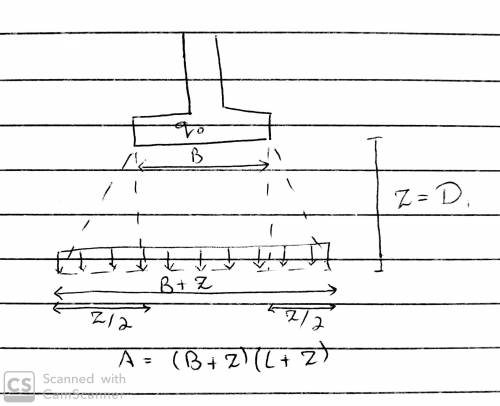
Physics, 14.02.2020 22:20 jasonr182017
An engineer has designed the foundation for column system (20 columns) of a 5 story residential building. Preliminary excavation showed level of water below 3.5 m from ground level. The column loads were equal in all columns. Each column carried 2500 kN of axial load. The design engineer came up with the foundation size of 3.0 m 2.0 m for all columns. The assumed depth of footing was 1.5 m below the ground. Please calculate the appropriate boring depth from ground level for detail site investigation. Use ASCE procedure for your calculation.

Answers: 1


Another question on Physics

Physics, 21.06.2019 15:50
Electric charge is uniformly distributed inside a nonconducting sphere of radius 0.30 m. the electric field at a point p, which is 0.50 m from the center of the sphere, is 15,000 n/c and is directed radially outward. what is the maximum magnitude of the electric field due to this sphere
Answers: 2

Physics, 22.06.2019 08:30
What is the primary force that suspension bridges use cables to hold their spans up? a. tension force b. resistance force c. normal force d. elastic force e. applied force
Answers: 3

Physics, 22.06.2019 17:00
In the future, people will only enjoy one sport: electrodisc. in this sport, you gain points when you cause metallic discs hovering on a field to exchange charge. you are an electrodisc player playing the popular four disc variant. the disks have charges of qa = −8.0 µc, qb = −2.0 µc, qc = +5.0 µc, and qd = +12.0 µc. (1) you bring two disks together and then separate them. you measure the resulting charge of these two disks and find that it is +5.0 µc per disk. which two disks did you bring together? (a) a and b (b) a and c (c)a and d (d)b and c(e) b and d (f) c and d. (2) you bring three disks together and then separate them. you measure the resulting charge of these three disks and find that it is +3.0 µc per disk. which three disks did you bring together? a, b, and c (a) a, b, and d (c) a, c, and d (d) b, c, and d. (3) given the resulting charge of each disk measured in (b) is +3.0 µc, how many electrons would you need to add to a disk of this charge to electrically neutralize it? electrons
Answers: 3

Physics, 22.06.2019 18:30
Blood pressure the total amount of blood the heart pumps in one minute 2. cardiac output the number of times your heart beats in a minute 3. dilate the amount of blood that the heart can pump in a single beat 4. heart rate the force exerted on the walls of the blood vessels by the blood that moves through them 5. stroke volume to widen or get larger in size
Answers: 3
You know the right answer?
An engineer has designed the foundation for column system (20 columns) of a 5 story residential buil...
Questions



Health, 12.10.2020 04:01





English, 12.10.2020 04:01


Social Studies, 12.10.2020 04:01







Mathematics, 12.10.2020 04:01

History, 12.10.2020 04:01

Health, 12.10.2020 04:01






